Brighton and its environs have long boasted literary associations. The town's oldest hotel, The Old Ship, was described by William Thackeray in his satirical novel Vanity Fair (1848), while Jane Austen detailed Brighton's military camps in Pride & Prejudice (1813).
From 1853-67, English historical novelist William Harrison Ainsworth lived at 5 Arundel Terrace where he wrote Ovingdean Grange: A Tale of the South Downs (1860), which included a romantic account of King Charles II's escape to France and also the legend of Devil's Dyke.
The sister of the Reverend Charles Dodgson (Lewis Carroll) lived at 11 Sussex Square from 1874-87.
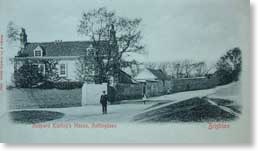 Rudyard Kipling lived in his house 'The Elms' in Rottingdean (opposite)
for many years, where he wrote Kim (1901).
Rudyard Kipling lived in his house 'The Elms' in Rottingdean (opposite)
for many years, where he wrote Kim (1901).
So far as our own genre is concerned, such writers and artists as E.F. Benson, Sir Arthur Conan Doyle, James Herbert, Tanith Lee, Neil Gaiman, Peter O'Donnell, Michael Marshall Smith, Dave Carson and Peter James have all either lived or been associated with the area in and around Brighton.
The Royal Albion Hotel itself has enjoyed a long and distinguished affinity with those involved in politics, sports, literature and the arts. In 1910, prior to the building being closed down and before Sir Harry Preston restored it to its former glory, English novelist Arnold Bennett wrote the first book in his Clayhanger family saga while staying in the hotel. Over the following two decades it became the haunt of many of the famous figures of the day. Authors Gilbert Fankau, Hugh Walpole and Jeffery Farnel stayed there. As did the painter Sir John Lavery, Brighton impresario Charles B. Cochran, the Marquis of Clydesdale, Lord Plunkett and The Prince of Wales' secretary, Sir Godfrey Thomas. The veteran journalist and radio and television broadcaster Gilbert Harding was a regular at the bar.
American heavyweight boxing champion "Gene" Tunney, who famously defeated Jack Dempsey twice, was a personal friend of Sir Harry Preston, who himself was a well-known amateur boxer in his youth. Preston organised annual boxing tournaments in Brighton, some of which were attended by the Prince of Wales, who would always stay at the Royal Albion in Room 125. Sir Harry Preston was also photographed with such stars of the day as Evelyn Laye, Tallulah Bankhead, Richard Tauber, Diana Napier, Jack Hilton and Jack Payne.
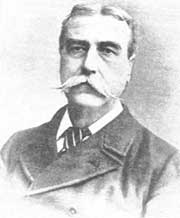 But perhaps the most bizarre and intriguing link is between The Royal Albion Hotel and Jack the Ripper. In
his 2002 book, Jack the Ripper's Black Magic Rituals, former career criminal turned author
Ivor Edwards claims that the infamous killer was, in fact, Satan-worshipper Robert Donston Stephenson,
a trained surgeon (pictured left), who prepared for the Ripper killings by committing a murder
in the hotel itself!
But perhaps the most bizarre and intriguing link is between The Royal Albion Hotel and Jack the Ripper. In
his 2002 book, Jack the Ripper's Black Magic Rituals, former career criminal turned author
Ivor Edwards claims that the infamous killer was, in fact, Satan-worshipper Robert Donston Stephenson,
a trained surgeon (pictured left), who prepared for the Ripper killings by committing a murder
in the hotel itself!
| Advertisement |
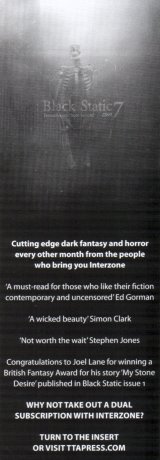
|
| Click on Image |
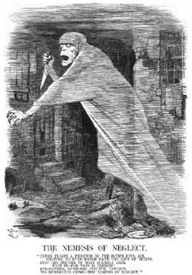 Before then, in June 1888, psychic researcher Edmund Gurney received a letter telling him to travel to
Brighton. Without explaining his reasons to either family or friends, he checked into The Royal Albion
Hotel on the 22nd. He was found dead he following morning with a pad soaked in chloroform over his
face. The coroner's verdict was accidental death. According to Edwards, Gurney was murdered because
he was investigating Madame Bravatsky, a well-known occultist and a friend of Stephenson, who at the
time was living only a two-minute walk from the hotel and who was reputedly addicted to chloroform. The
day after the inquest, Stephenson left Brighton and moved to London. Shortly thereafter the Ripper's
first victim, prostitute Mary Ann Nichols, was discovered on August 31st...
Before then, in June 1888, psychic researcher Edmund Gurney received a letter telling him to travel to
Brighton. Without explaining his reasons to either family or friends, he checked into The Royal Albion
Hotel on the 22nd. He was found dead he following morning with a pad soaked in chloroform over his
face. The coroner's verdict was accidental death. According to Edwards, Gurney was murdered because
he was investigating Madame Bravatsky, a well-known occultist and a friend of Stephenson, who at the
time was living only a two-minute walk from the hotel and who was reputedly addicted to chloroform. The
day after the inquest, Stephenson left Brighton and moved to London. Shortly thereafter the Ripper's
first victim, prostitute Mary Ann Nichols, was discovered on August 31st...
Stephenson himself published a book in 1904 entitled The Patristic Gospels, before apparently disappearing without a trace. No death certificate has ever been found.
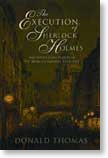 Spiritualist Edmund Gurney also turned up as a character in the 2007 novella 'The Case of the Phantom
Chambermaid' in the collection The Execution of Sherlock Holmes and Other New Adventures of the
Great Detective by Donald Thomas. In the story, Holmes and Dr, Watson travel to Brighton and
take rooms at The Royal Albion Hotel, where a chambermaid had been dismissed from her job. Before
too long, the two sleuths are investigating demonstrations of mesmerism and mind-reading at the aquarium,
which leads to a race against time to save Gurney's life.
Spiritualist Edmund Gurney also turned up as a character in the 2007 novella 'The Case of the Phantom
Chambermaid' in the collection The Execution of Sherlock Holmes and Other New Adventures of the
Great Detective by Donald Thomas. In the story, Holmes and Dr, Watson travel to Brighton and
take rooms at The Royal Albion Hotel, where a chambermaid had been dismissed from her job. Before
too long, the two sleuths are investigating demonstrations of mesmerism and mind-reading at the aquarium,
which leads to a race against time to save Gurney's life.